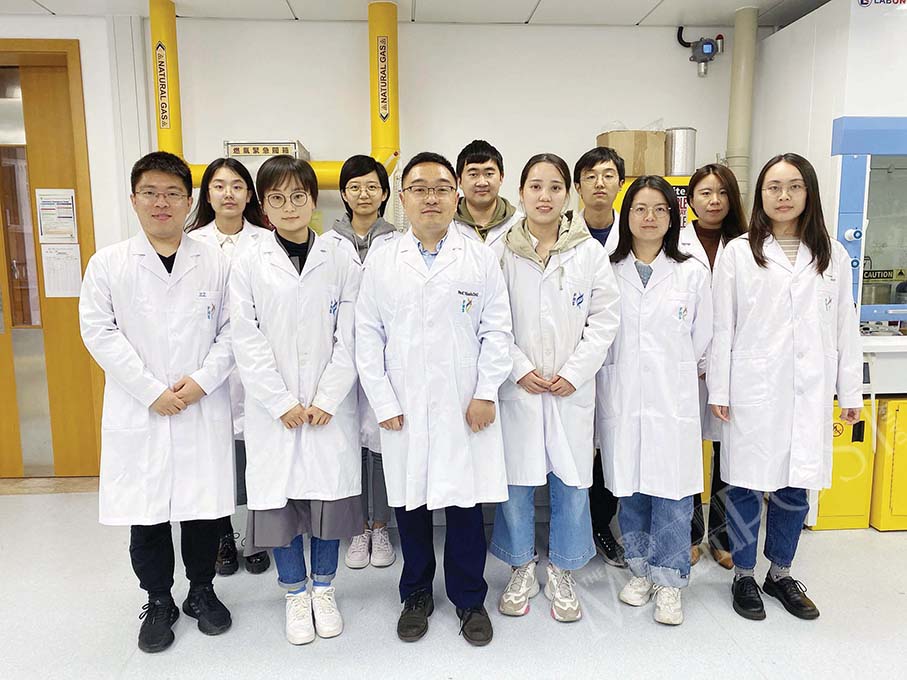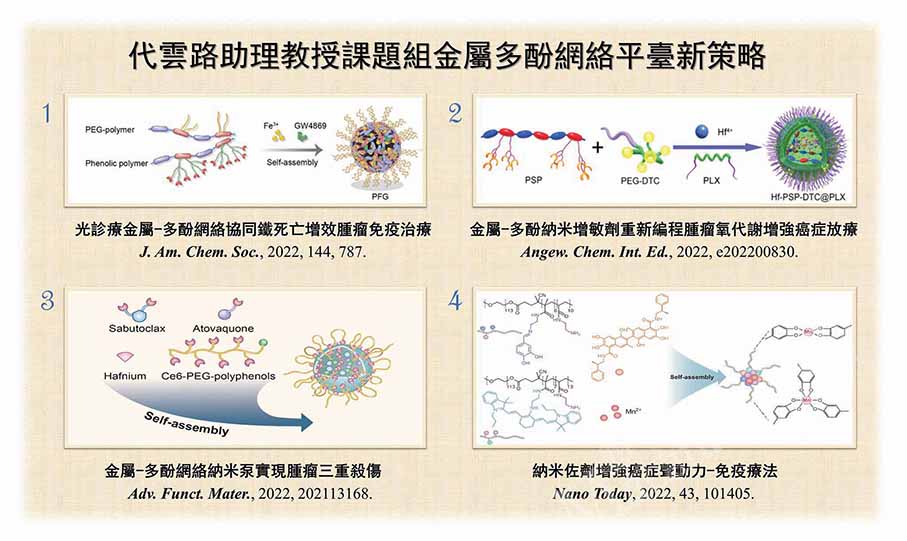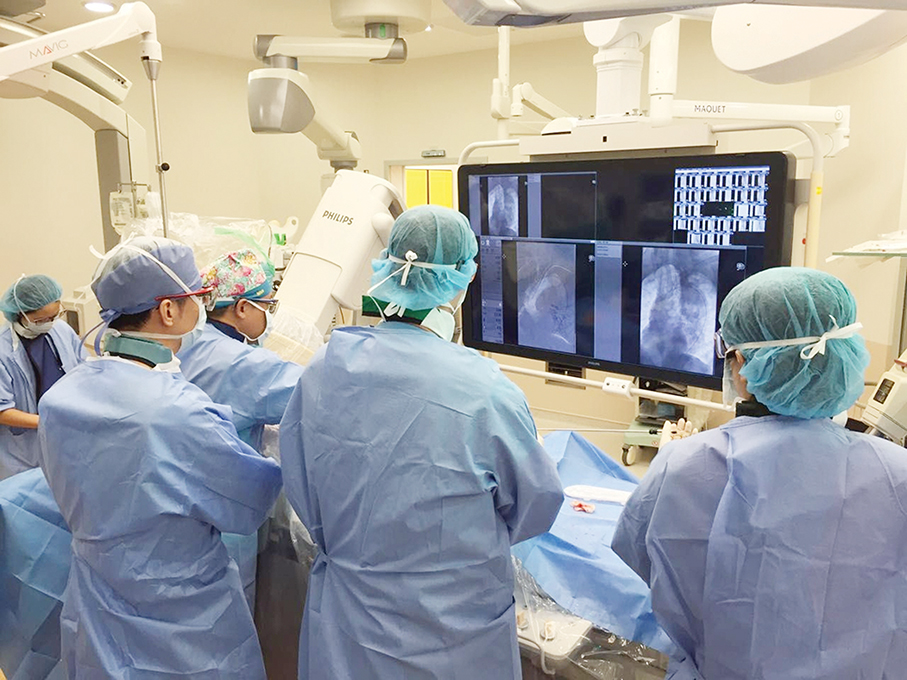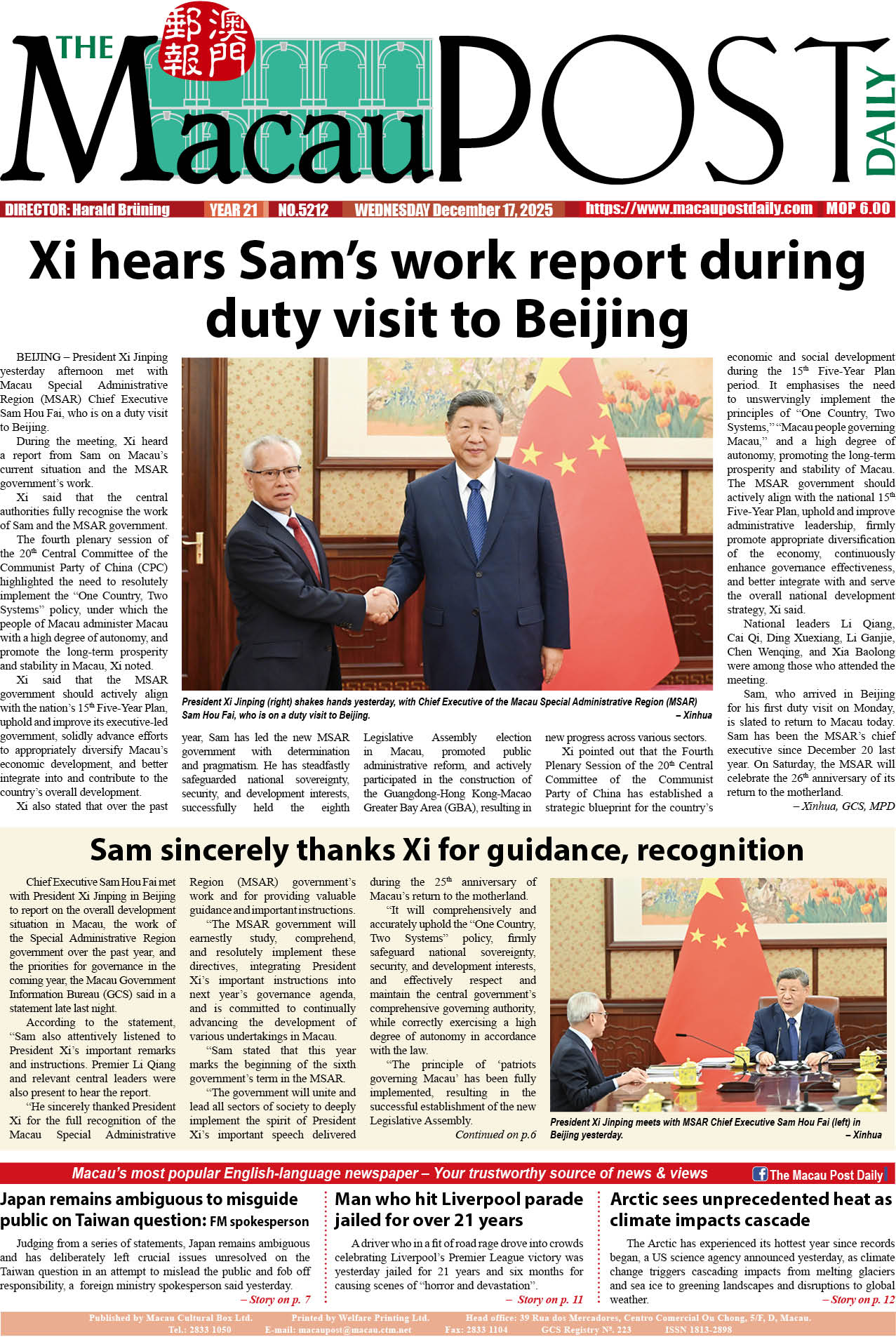The University of Macau (UM) announced in a statement yesterday that a research team led by Faculty of Health Sciences (FHS) assistant professor Dai Yunlu (aka Yunlu Dai) developed a “a series of novel metal phenolic nanoparticles” to improve various cancer treatments’ therapeutic efficacy.
The findings were published in the Journal of the American Chemical Society, Angewandte Chemie International Edition, Advanced Functional Materials, and Nano Today, the statement noted.
According to the statement, in recent years, nanotechnology has experienced rapid development, “with multifunctional diagnostic nanocomposites for cancer diagnosis, imaging, and treatment” continuously developed and employed.
The statement underlined that polyphenolic materials are “a class of phenolic compounds with multiple hydroxyl groups” with “excellent properties such as good biocompatibility, diverse pharmacological activities, and coordination with metals”.
The research team changed “functional molecules (photosensitisers, imaging molecules, and anti-cancer drugs) with polyphenols to develop multi-functional polyphenol derivative modules” in the study that could offer new therapeutic strategies for cancer.
The transitional expression of PD-L1 on the exosomes’ surface leads to immunotherapeutic failure in the tumour microenvironment, the statement said. The statement added that the team created phototherapy with “metal phenolic nanoparticles (PFG)”, which combined with photothermal therapy and ferroptosis, can improve immunogenic death of tumours and “stimulate anti-tumour immune effects”.
The statement pointed out that “PFG has excellent near-infrared II fluorescence and photoacoustic imaging performance” that can be employed for accurate photothermal therapy, while GW4869 in PFG can effectively stop “PD-L1 expression in exosomes, thus promoting functional T cell proliferation”.
The statement said that the team established a “metal polyphenol nanosensitizer (Hf-PSP-DTC@PLX) by loading a hydrogen sulfide donor with an amphiphilic polymer and chelating a polyphenol semiconductor polymer with hafnium to achieve near-infrared II imaging performance and realize diagnosis and treatment integration” upon considering the accuracy of the new material with near-infrared II fluorescence.
The nanosensitiser creates “a reasonable dose of hydrogen sulfide, which inhibits mitochondrial respiration and reduces the oxygen consumption of tumour cells, effectively improving the oxygenation of tumour cells”, the statement added.
The team also constructed another “hafnium network” to attain a “triple kill in tumour therapy”, combining radiotherapy, radiodynamic therapy, and immunotherapy. This was done in view of radiotherapy tolerance still being an issue to be solved.
Moreover, the team developed “metal phenolic adjuvants that can effectively lower glutathione levels to enhance acoustic therapy and activate the cGAS-STING pathway in the presence of manganese ions to enhance the immune response in the body and activate cancer immunotherapy”, the statement noted.
All studies were authored by Dai, with FHS post-doctoral fellows Xie Lisi and Li Jie and doctoral students Sang Wei and Tian Hao as first authors, the statement said. Various entities supported the study such as UM and the National Natural Science Foundation of China.
The research articles can be found at https://pubs.acs.org/doi/10.1021/jacs.1c09753, https://onlinelibrary.wiley.com/doi/full/10.1002/anie.202200830, https://onlinelibrary.wiley.com/doi/full/10.1002/adfm.202113168 and https://www.sciencedirect.com/science/article/pii/S1748013222000329 .

This undated handout photo shows University of Macau (UM) Faculty of Health Sciences (FHS) Assistant Professor Dai Yunlu (3rd from left) posing with his research team.

This image provided by UM yesterday shows schematic illustrations of the metal phenolic nanoparticles.








